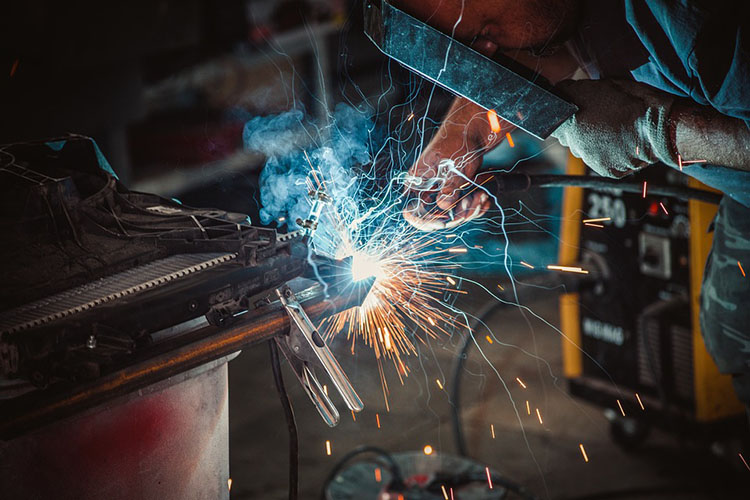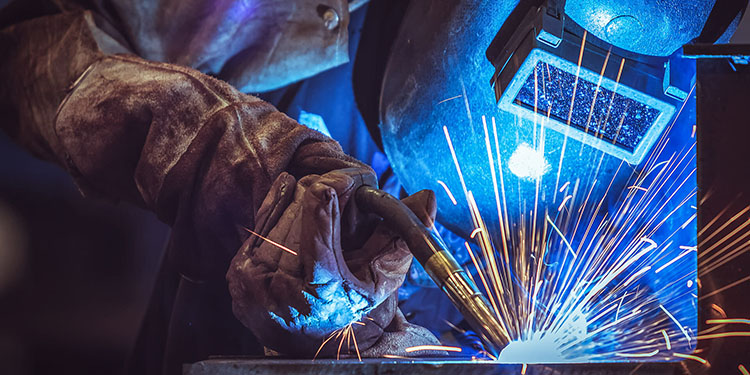1. What is the purpose of steel annealing?
Answer: ①Reduce the hardness of steel and improve plasticity, so as to facilitate cutting and cold deformation processing; ②Refine the grain, uniform the composition of steel, improve the performance of steel or prepare for future heat treatment; ③Eliminate the residue in steel Internal stress to prevent deformation and cracking.
2. What is quenching? What is its purpose?
Answer: The heat treatment process of heating the steel piece to a certain temperature above Ac3 or Ac1, keeping it for a certain period of time, and then cooling it at an appropriate speed to obtain martensite or bainite is called quenching. The purpose is to increase the hardness, strength and wear resistance of steel.
3. What are the advantages and disadvantages of manual arc welding?
Answer: A. Advantages
(1) The process is flexible and adaptable; (2) The quality is good; 3) It is easy to control deformation and improve stress through process adjustment; (4) The equipment is simple and easy to operate.
B. Disadvantages
(1) The requirements for welders are high, and the operation skills and experience of welders directly affect the quality of products.
(2) poor working conditions; (3) low productivity.
4. What are the advantages and disadvantages of the submerged arc welding process?
Answer: A. Advantages
(1) High production efficiency. (2) Good quality; (3) Save materials and electric energy; (4) Improve working conditions and reduce labor intensity
B. Disadvantages
(1) Only suitable for horizontal (prone) position welding. (2) Difficult to weld highly oxidizing metals and alloys such as aluminum and titanium. (3) The equipment is more complicated. (4) When the current is less than 100A, the arc stability is not good, and it is not suitable for welding thin plates with a thickness of less than 1mm. (5) Due to the deep molten pool, it is highly sensitive to pores.
5. What are the general principles for choosing a groove?
Answer:
① It can ensure the penetration of the workpiece (the penetration depth of manual arc welding is generally 2mm-4mm), and it is convenient for welding operation.
②The groove shape should be easy to process.
③ Improve welding productivity and save welding rods as much as possible.
④ Minimize the deformation of the workpiece after welding as much as possible.
6. What is the weld shape factor? What is its relationship with the weld quality?
Answer: During fusion welding, the ratio between the width of the weld (B) and the calculated thickness (H) of the weld on the cross-section of the single-pass weld, that is, ф=B/H, is called the weld form factor. The smaller the weld shape coefficient, the narrower and deeper the weld, and such welds are prone to pore slag inclusions and cracks. Therefore, the weld shape factor should maintain a certain value.
7. What are the causes of undercut and how to prevent it?
Answer: Causes: mainly due to improper selection of welding process parameters, too much welding current, too long arc, improper speed of transporting and welding rods, etc.
Prevention method: choose the correct welding current and welding speed, the arc cannot be stretched too long, and master the correct method and angle of transporting the strip.
8. What are the reasons and prevention methods for the weld surface size not meeting the requirements?
Answer: The cause is that the groove angle of the weldment is wrong, the assembly gap is uneven, the welding speed is improper or the strip transportation method is incorrect, the welding rod and angle are improperly selected or changed.
Prevention method Select the appropriate groove angle and assembly clearance; correctly select the welding process parameters, especially the welding current value and adopt the appropriate operation method and angle to ensure that the weld shape is uniform.
Post time: May-31-2023

